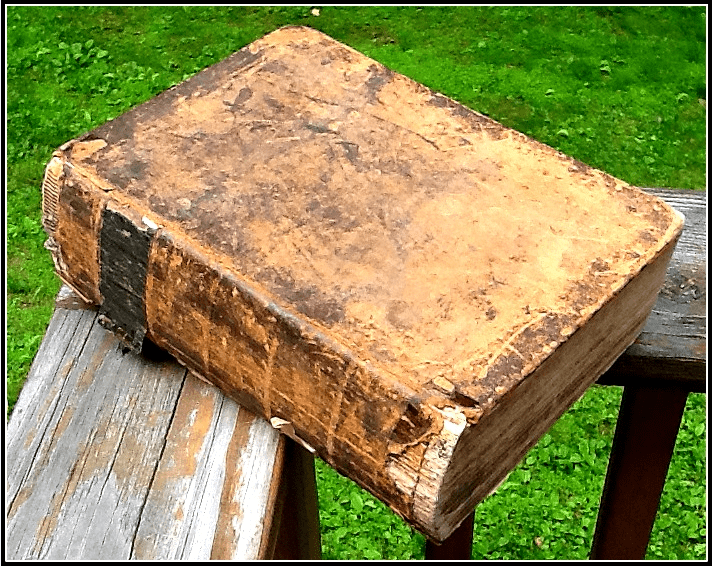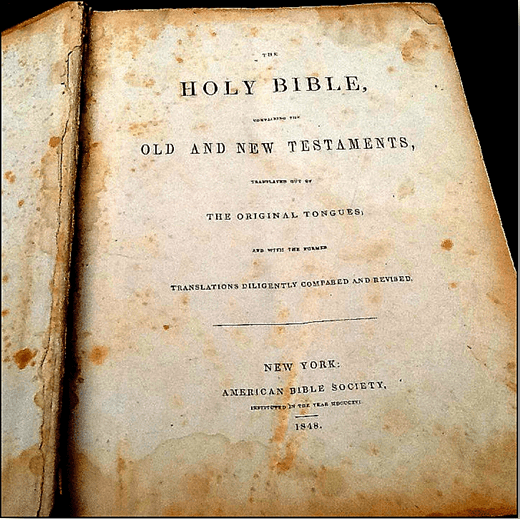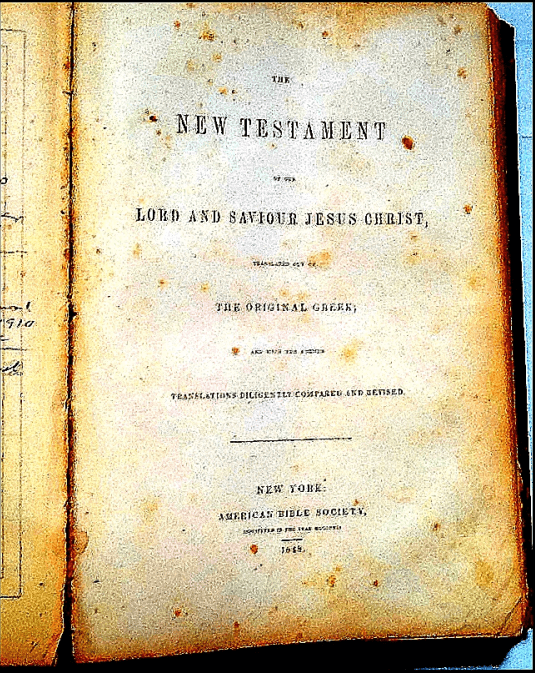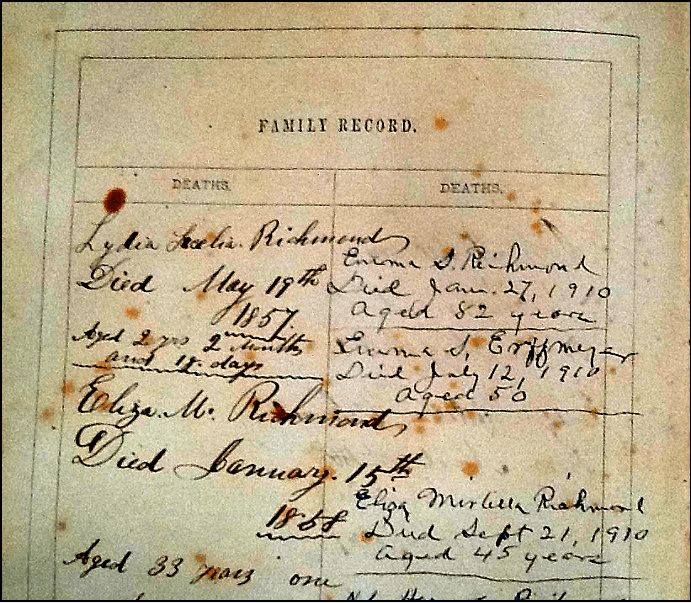The Richmond Family Bible I bought on eBay recently arrived in the mail.

It was exactly as the seller had described it.
The eBay description had read:
Cover is well worn and torn.
A few pages are loose, most still intact.
Pages have spots throughout.
This is a family Bible which belonged to the William Richmond (1820-1871) family.
Bible has handwritten pages of marriages, births and deaths.
Also includes two typed pages detailing history written in the Bible as well as a brief family history dating back to 1040.
OK—I got what I paid for when I bought this family Bible. It was well packaged and arrived safely, so this eBay transaction worked very well. I have found and bought other long-lost family history items on eBay in the past and never had a problem with any of these online auctions.
Let’s get acquainted with this family Bible.
The first thing you want to do is look at the title page and the verso (back) of the title page.

The title page clearly shows that this Bible was printed in New York in 1848 by the American Bible Society.
You need to also check the verso of the title page to see if there is additional copyright information printed there. Usually the verso repeats the year of publication, but sometimes there is different dating: imprint dates of publication or other clues as to when the book was actually printed.
The verso of the title page is blank in this Bible.
Your next step then is to examine the title page of the New Testament.

Looking at the title page for the New Testament we see that the publication information is the same as the Bible’s title page. And again in this case, the verso is blank.
You want to be sure to check the date of publication on both title pages. As publishers printed and assembled Bibles for distribution, they sometimes printed an extra supply of either the Old Testament or the New Testament—in order to bind and sell either part separately, or together as a large family Bible.
Knowing the most recent publication date helps you to verify the information written in the Bible. Any information entered into the family registry pages for the decades before the Bible was printed would have been written in the Bible from memory, or perhaps copied from another family Bible or document. Entries made after the date of publication were likely made when the Bible was first purchased, or over time as each birth, marriage or death occurred.

For example: looking at the deaths recorded in the family registry, we want to examine the date of each person’s death and look to see if the handwriting style or color of the ink varies from entry to entry. These clues suggest which entries were all made at the same time and which entries were made at different times—indicating that they might have been made contemporary to the event.
In this family registry none of the entries were dated before 1848, the date the Bible was printed, making it likely that the entries were made around the time each event occurred.
Do you have an old family Bible as one of your heirlooms? Take it out and examine it closely, using the tips in this article, to see what family clues you can discover.
Related Family Bible Articles:
- Finding Family Heirlooms & Artifacts with eBay
- Family Digs Up Old Grave to Find Family Bible and Claim Fortune
- Tracking Down Family Bibles…
[bottom_post_ad]

do you still have the bible?
you only posted one page of it.
were there other pages with family info?